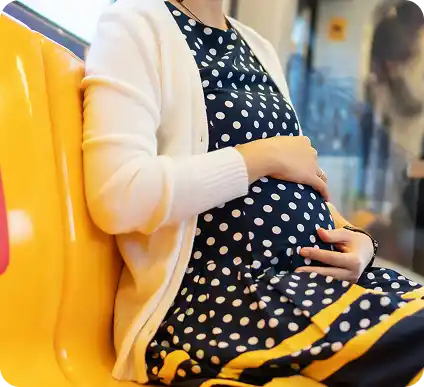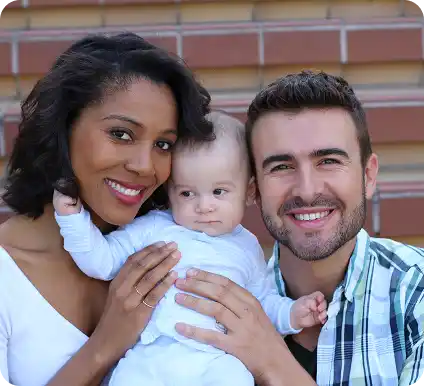Emergency C-Section at 32 Weeks - One Birth Mother's Journey Through Crisis and Open Adoption

In this episode of Choosing Adoption, Host Donna Pope explores Birth Mother McKenzie's story examining how crisis situations test adoption relationships and reveal the strength of support systems built during pregnancy.
According to March of Dimes data from 2023, approximately one in ten babies in the United States is born premature. McKenzie became part of these statistics when her carefully planned adoption journey took an unexpected turn.The 24-year-old mother of three traveled from Ohio to Utah during her eighth month of pregnancy to place her baby for adoption. She had selected adoptive parents Jeff and Christine, teachers who had never had children despite years of infertility struggles. Everything seemed thoughtfully organized. Then severe blood pressure spikes led to seizures requiring emergency hospital transfer. Baby Grace arrived at 32 weeks via emergency C-section, classified by the Cleveland Clinic as "moderately preterm", requiring immediate NICU care.
Choosing Parents Who Would Treasure Her Daughter Most
With fewer than one infant out of every 200 born each year relinquished for adoption in the United States, birth mothers like McKenzie represent a small but intentional group. Research published in Contraception journal estimates approximately 18,000 to 20,000 private domestic adoptions occur annually. McKenzie wanted parents who had never experienced parenthood and would treasure her daughter as their completing piece. She describes her selection criteria using a book metaphor: someone who already owns many books might appreciate receiving another one, but for someone who has never owned a book before, that book becomes everything.
Jeff and Christine's profile revealed years of infertility struggles and deep preparation for parenthood. McKenzie asked detailed questions about their support networks, knowing that according to research on birth mother demographics published in Perspectives on Sexual and Reproductive Health, contemporary birth mothers tend to be older and more diverse than previous generations, with many already having children and understanding the support necessary for successful parenting. During phone conversations, McKenzie evaluated their emotional authenticity. Their responses felt genuine rather than performative, building the foundation of trust that would carry them through the NICU crisis ahead.
Hospital Wristbands and Building Trust During Crisis
When Grace arrived premature and required NICU admission, hospital protocols issued McKenzie two wristbands allowing access to see the baby. She kept one for herself and gave the second to Christine. Research on attachment and bonding in NICU environments shows that early parental involvement improves outcomes for premature infants. McKenzie's gesture prioritized Jeff and Christine's opportunity to bond with their daughter immediately, even during the stressful NICU environment.
Partner Damien didn't receive NICU access through the wristband system. Instead, McKenzie demonstrated her commitment to honoring Jeff and Christine as Grace's parents from the beginning. She told Christine directly that she felt comfortable stepping back and giving them full authority as parents. This moment defined their open adoption relationship, communicating trust and respect through action rather than words.
Co-Parenting Relationships That Support Adoption Decisions
McKenzie's family structure reflects modern blended family dynamics. She shares three daughters with ex-partner Randy, who remains actively involved despite their relationship ending. Her current partner Damien accompanied her to Utah for the birth and placement. According to the National Survey of Adoptive Parents, 68% of private domestic adoptions experience some level of continued post-placement contact, reflecting evolving family structures and open adoption practices.
Randy stayed in Ohio caring for the three girls while McKenzie and Damien traveled for delivery. When McKenzie went into early labor, Damien called Randy to video chat so he could see his daughter Grace and record a message for the adoption memory book. Both men supported McKenzie's decision, prioritizing the children's wellbeing over personal dynamics. This cooperative approach meant McKenzie had support rather than conflict during one of the most difficult experiences of her life.
Financial Support Creates Space for Emotional Healing
Heart to Heart Adoption provided McKenzie with financial assistance during pregnancy and for six to eight weeks following placement. As a single mother financially supporting three daughters, this support proved essential. She received weekly assistance that allowed her to continue supporting her daughters at home while staying in Utah for the birth.
After placement, McKenzie could return home knowing bills were covered while she grieved and recovered from the emergency C-section. This breathing room makes emotional healing possible. Birth mothers who must immediately return to work to pay bills don't get time to process grief. The agency also provided housing in Utah for the month before delivery, allowing McKenzie to focus on emotional preparation, attend counseling sessions, and connect with other birth mothers.
Maintaining Connection Through Open Adoption Technology
According to the Adoption Network Law Center, approximately 95% of domestic infant adoptions in the United States include some degree of openness. FindLaw's analysis shows approximately two-thirds of birth parents continue post-placement contact with adoptees. Jeff, Christine, McKenzie, Randy, and Damien all use Hearts Connect, a digital platform allowing birth parents and adoptive parents to exchange photos, messages, and milestone updates. This technology provides structure and boundaries while maintaining ongoing connection.
Before leaving Utah while Grace remained in the NICU, McKenzie messaged Jeff and Christine through the app, explaining her departure wasn't goodbye. She knows she can contact them directly or reach out to her caseworker Hailey if concerns arise. Jeff and Christine also gave thoughtful gifts, helping McKenzie's three daughters maintain a connection to their baby sister. They purchased three Minnie Mouse stuffed animals for the girls at home and kept a matching one for Grace. As Grace grows, photos will show McKenzie's daughters how big their sister is getting.
Advice for Birth Mothers About Strength and Support
Research shows today's birth mothers differ significantly from historical stereotypes. According to studies published in Perspectives on Sexual and Reproductive Health, contemporary birth mothers are older and more diverse, with the majority having already had other children. This aligns with CDC data showing the mean age at first birth in the United States is now 27.5 years. McKenzie emphasizes that birth mothers possess more strength than they typically believe. The journey involves intense emotions, but pain doesn't last forever, and healing becomes possible with time and support. The key involves believing in your own capability rather than self-defeating thinking.
She particularly emphasizes letting others carry worry rather than managing everything alone. Agency staff, counselors, and fellow birth mothers gradually took that worry from her, allowing her to focus on emotional processing instead of logistics. This vulnerability and willingness to accept help transformed McKenzie's experience, allowing her to build the support network that carried her through the premature delivery crisis.
Finding Peace Through Intentional Choices
Despite leaving her newborn daughter in the NICU with adoptive parents, McKenzie describes boarding the plane home with fullness in her heart rather than emptiness. The relationships she built, the support she received, and the communication systems in place all contribute to her confidence about the decision.
McKenzie's confidence stems from knowing Jeff and Christine view Grace as their completing piece. They dropped everything to catch flights when delivery happened. They're spending hours at the NICU learning to parent their daughter. Their commitment and preparation allow McKenzie to return home knowing Grace is exactly where she needs to be.
The space to grieve away from home, the financial support to heal without economic pressure, and the knowledge that Grace is loved and wanted all contribute to McKenzie's ability to return home and be fully present with her three daughters. She views placement as a blessing rather than loss, which doesn't minimize difficulty but creates space for healing and ongoing relationship.
Ready to hear McKenzie's complete story and learn more about post birth adoption support and real stories from the adoption community? Subscribe to Choosing Adoption for conversations that explore how families can find solutions when traditional support systems fall short.
Follow or Subscribe to Choosing Adoption on your favorite platforms:
Website | YouTube | Twitter/X | Instagram
Follow Donna Pope
#Adoption #AdoptionJourney #BirthMother #OpenAdoption #AdoptionStories #BirthMotherAutonomy #RespectBirthMothers #AdoptionChoices #AdoptionSupport #AdoptionAdvocacy #AdoptionPolicy #FamilyThroughAdoption #EveryStoryMatters #AdoptionCommunity #AdoptionAwareness #EmpowerBirthMothers #AdoptionSupportNetwork #WomenSupportingWomen #EthicalAdoption #AdoptionLove


Comments